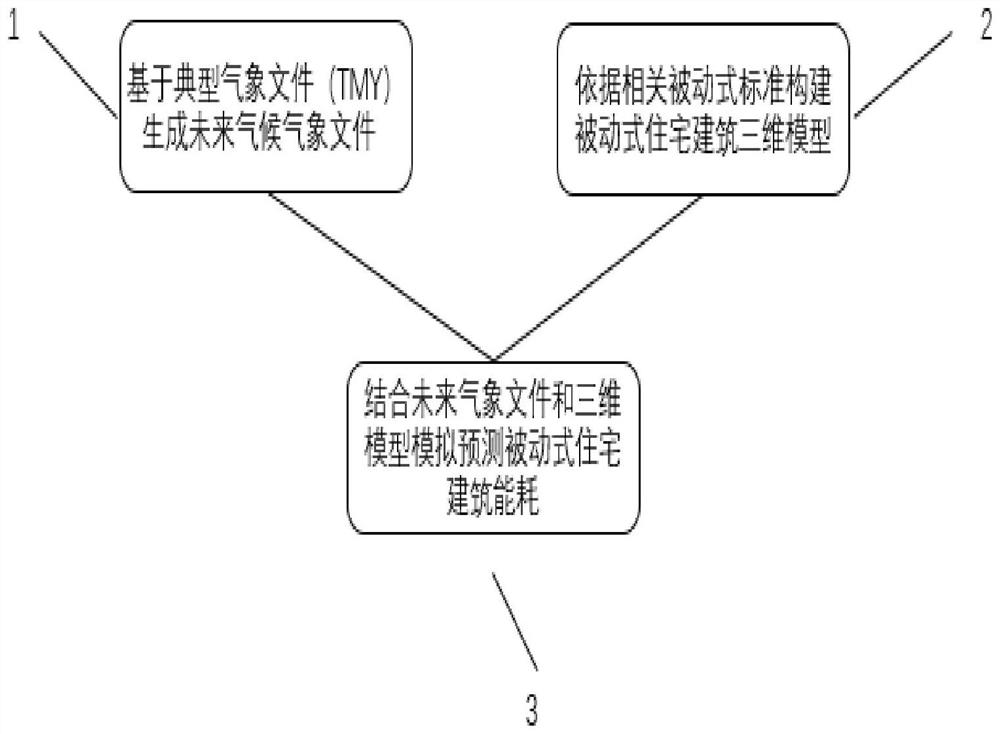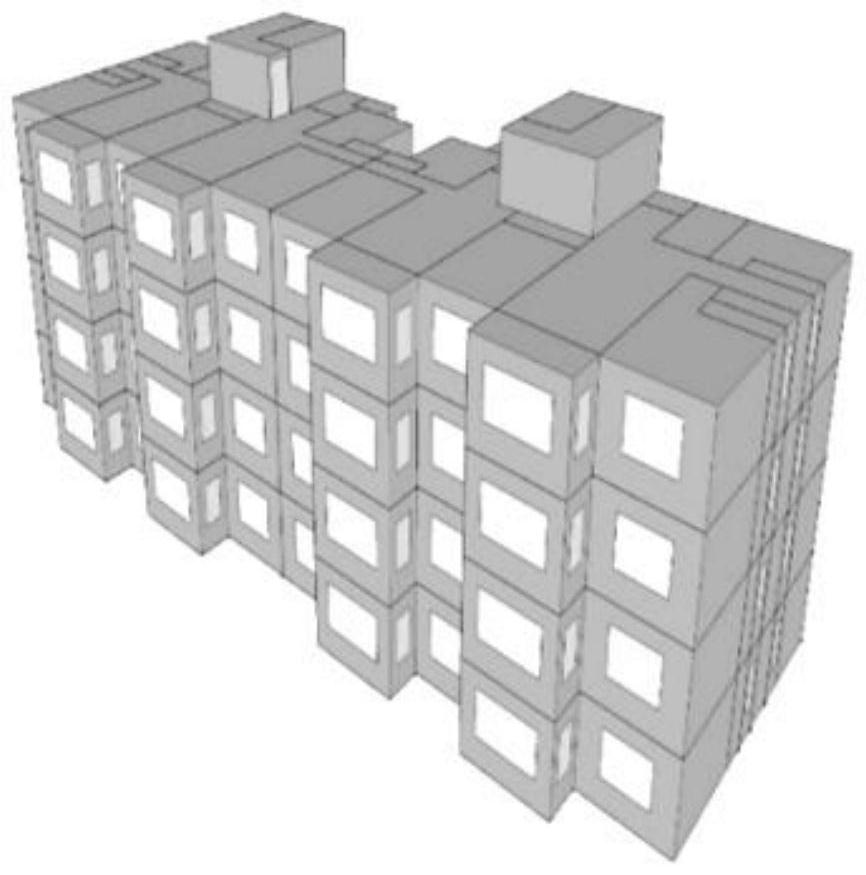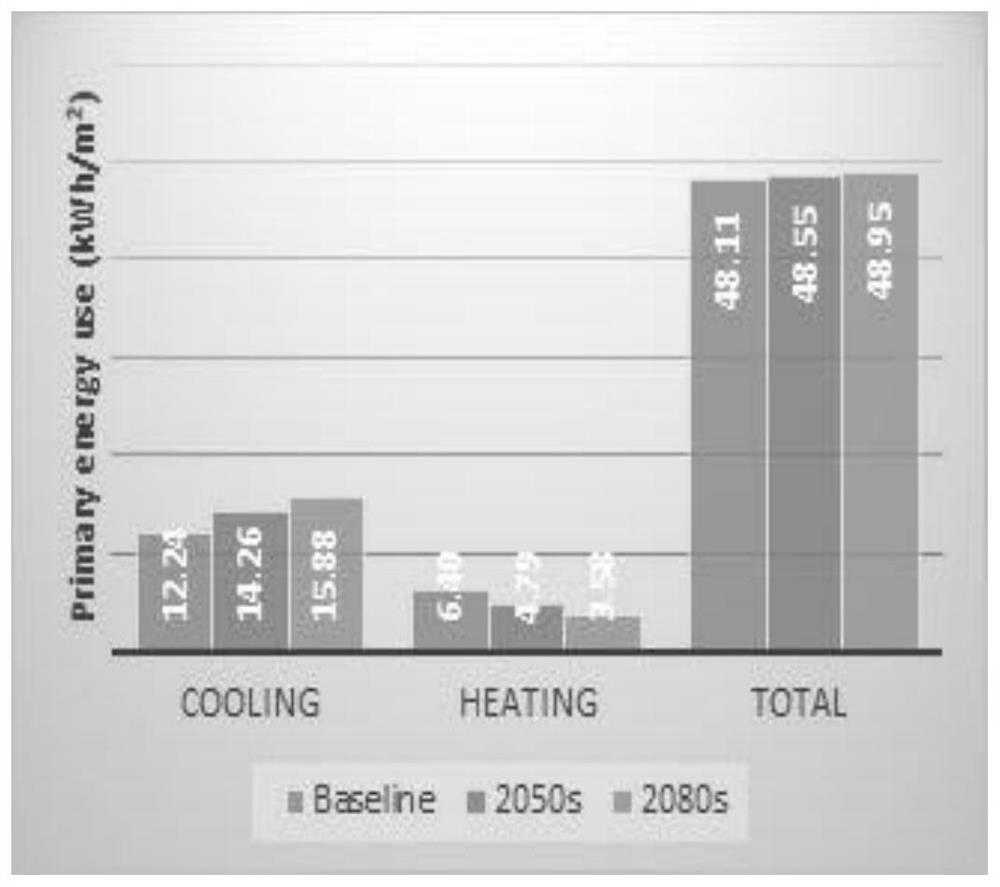Method for predicting energy consumption of passive residential building based on future climate change
A technology for residential construction and climate change, applied in forecasting, design optimization/simulation, instrumentation, etc., and can solve problems such as inapplicability
- Summary
- Abstract
- Description
- Claims
- Application Information
AI Technical Summary
Problems solved by technology
Method used
Image
Examples
Embodiment 1
[0044] Select a city in a certain province as the research target city, and a passive house building as the research object. Downscale and deform the climate and meteorological conditions of a certain city to generate the climate and meteorological conditions in the future 2050s and 2080s. According to the relevant building parameter standards of passive house buildings and the indoor thermal Based on the disturbance parameter specification, a three-dimensional model of a passive residential building is established, and based on the obtained climate file, it is imported into the building energy consumption simulation software Openstudio to simulate the current and future building energy consumption of the research object.
[0045] Determine that the selected city is a hot summer and cold winter area, and select building parameters that have a greater impact on passive residential buildings, namely, the heat transfer coefficient of the outer wall, the heat transfer coefficient of...
PUM
 Login to View More
Login to View More Abstract
Description
Claims
Application Information
 Login to View More
Login to View More - R&D
- Intellectual Property
- Life Sciences
- Materials
- Tech Scout
- Unparalleled Data Quality
- Higher Quality Content
- 60% Fewer Hallucinations
Browse by: Latest US Patents, China's latest patents, Technical Efficacy Thesaurus, Application Domain, Technology Topic, Popular Technical Reports.
© 2025 PatSnap. All rights reserved.Legal|Privacy policy|Modern Slavery Act Transparency Statement|Sitemap|About US| Contact US: help@patsnap.com



